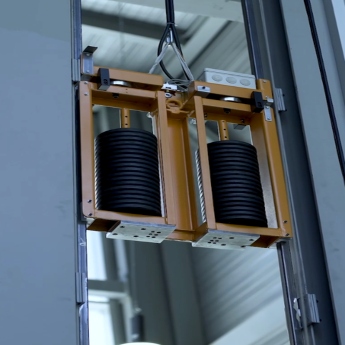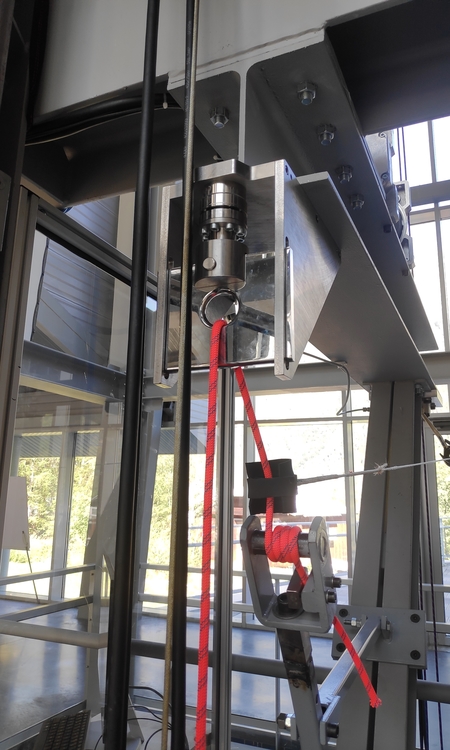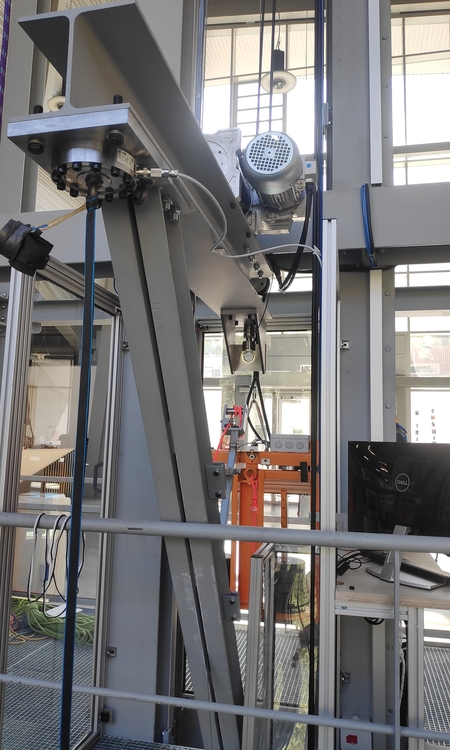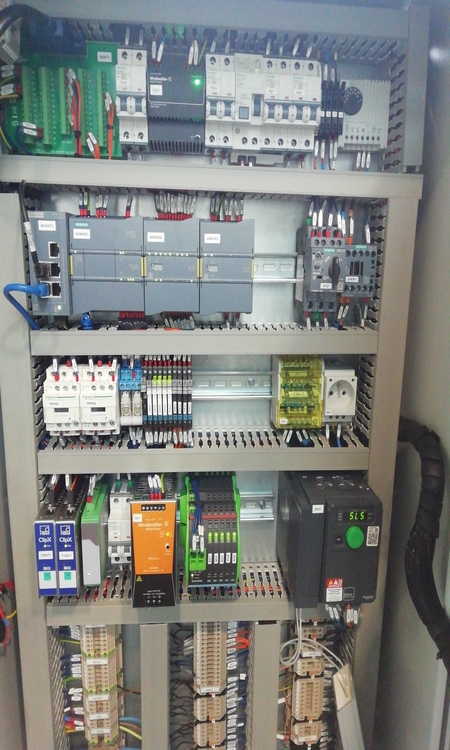Simond (Decathlon) Uses the Force of HBK Transducers to Develop More Reliable, Safer Mountain Climbing Equipment
Most dedicated mountaineers will be aware of the cutting edge climbing equipment supplied by Mont-blanc based company, Simond. Established 150 years ago, the French company has been at the heart of many seemingly impossible conquests, such as Annapurna in 1950, when a team - led by Maurice Herzog – was the first ever to reach an 8,000 meter summit. Its equipment was also used for Everest in 1953, during Edmund Hillary and Norgay Tensing’s climb to the “roof of the world” (8,840 m).
Measuring the Pressure
The company has never strayed from its path of innovation and quality. In 2008, it joined the Decathlon brand and gained access to new resources which strengthen its presence in the market. Simond has become the brand dedicated to the company's high-mountain activities and - in this capacity - it has benefited from specific investments to strengthen its position.
Following a recent move to new premises in Chamonix, the company made a major investment in a fall-testing machine, which features a ‘fall tower’. During drops tests from the tower, the behaviour of ropes, harnesses, mountaineering and climbing accessories are measured. Equipped with force sensors supplied by HBK, the machine measures the pressure exerted on equipment during these tests.
"The fall tower is designed in-house with safety, precision and efficiency in mind. Until now, we have been using external test equipment, in particular a machine from ENSA (Ecole Nationale de Ski et l'Alpinisme) in Chamonix Mont-Blanc. Now, with our own automated machine, we can carry out more tests at all stages of development since the machine is attached to the designers' office," said Antoine Lomberty, local engineer at the Décathlon mechanical testing laboratory.

Two Types of Testing
The machine enables drop tests, with both free and guided axis, to be carried out from a height of approximately 12 metres. The machine includes actuators (electric motors) and sensors, as well as all safety devices.
"These elements come from different suppliers, so we have developed our own control system for piloting, as well as our own data acquisition and processing system," continues Antoine.
“The guided axis tests mainly concern ropes and lanyards for via ferrata (these are marked out routes along rocky walls in the natural environment, with ladders, ropes already in place, bridges and footbridges). The rope for testing is lashed on one side at a fixed point and passes through a ring placed near this fixed point. It is on this ring that the force transducer is placed. The other end of the rope is attached to a moving mass positioned several metres high and held in place by two controlled electromagnets. The test involves releasing the mobile equipment and measuring the force exerted on the ring when the mass reaches the end of its travel. It is, of course, the length of the rope that determines the height and therefore the energy of the fall. The load applied to the mobile carriage can be adjusted for up to 120kg. Repetitions are applied automatically until the rope breaks.”
The free axis tests are used for harnesses, which are mounted on a dummy, then dropped in a free fall action and held by a rope.
In both cases, displacement - as well as force - is measured using high-frequency laser distance meters.
Do you have a similar need for your business or want to know more about HBK solutions? Get in touch with us!
Two Strain Gauge Sensors, Combined With a ClipX Conditioner
Both applications are similar, have broadly the same metrological requirements and both require hardened sensors for high mechanical strength.
"There is, however, one notable difference,” says Antoine Lomberty. “The transducer for the free-fall test is subject to transverse forces and it is important that these have as little influence as possible on the measurement."
To source the correct transducers for these tests, Antoine contacted measurement specialist, HBK. The supplier was already known to Antoine, as he had used HBK’s HBM branded equipment whilst working at the Decathlon test centre, in Lille. When the decision was made to develop the drop tower, he was confident enough of HBK’s expertise in this area and contacted local HBK specialist, Bernard Vindret.
Bernard and his team recommended sensors that have proven use with strain gauge technology and work with a ClipX analogue conditioner, which involved the signal being digitised at a frequency of 1 kHz by the acquisition chain. For the guided axis tests, a U93 transducer with a nominal force of 5 kN and a sensitivity of 0.5 mV/V, was chosen. The influence of transverse forces is not a decisive factor for these tests, but it’s still interesting for the engineers to see, since it is less than 0.5%, when compared to a transverse force which is usually 10% of the nominal force.
For the free axis, Simond opted for the U10M model, which has a nominal force of 5 kN (the range allows up to 2.5 MN) and an accuracy class of 0.02 %. In addition to metrological performance, sensitivity (or rather insensitivity) to transverse forces is an essential parameter here. This is only 0.01 % (for a transverse force of 10 % of the nominal force), which is 50 times better than for U93.
Each of these transducers is fitted with a ClipX conditioner (0.01% accuracy).
"We haven't had the opportunity to use two strain gauge sensors, combined with a ClipX conditioner until now. But we were very pleased to discover the richness and simplicity the integrated web interface offered for configuration. It’s particularly practical and easy to use, as it doesn’t require software installation or training before use," adds Antoine.
The drop tower will now undergo several weeks of use, to prove its usefulness for Simonds’ product testing.
The Requirements of the Décathlon Brands
Decathlon's investment in the drop tower for its Simond brand is a good symbol of the company's approach, which has made reliability and safety its top priorities. But it’s not the first time the company has showed such dedication to its product tests. Since 2006, its B'Twin bikes have been guaranteed for life and its Quechua backpacks (hiking sports) boast a 10-year guarantee.
This investment in Chamonix demonstrates the importance that the brand attaches to Simond. Having remained a family-owned company since its inception in 1860, it found a new dimension when it joined the group in 2008, benefiting from the support of over 300 sales points in France and around the world (more than a thousand shops in 70 countries). Simond is one of Décathlon's forty or so own brands, which account for around 80% of its turnover. Most of these brands are ex-nihilo creations, whereas Simond, which existed as a company, is one of the exceptions.
An interesting point to note is that Décathlon is a misnomer, since the name indicates ten disciplines of an athletics competition, but the group - created in 1976 – actually offers products for 87 sports disciplines.


